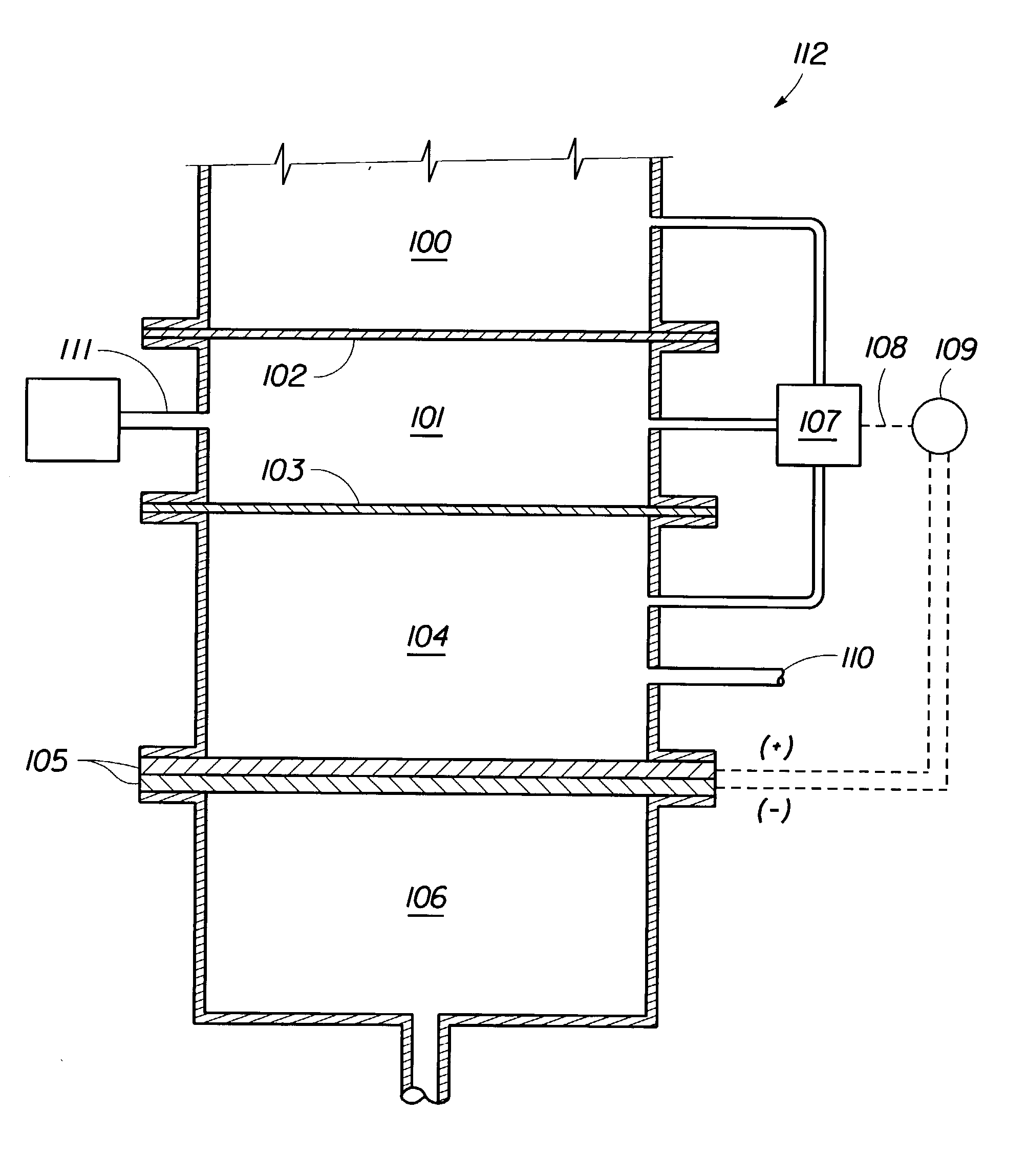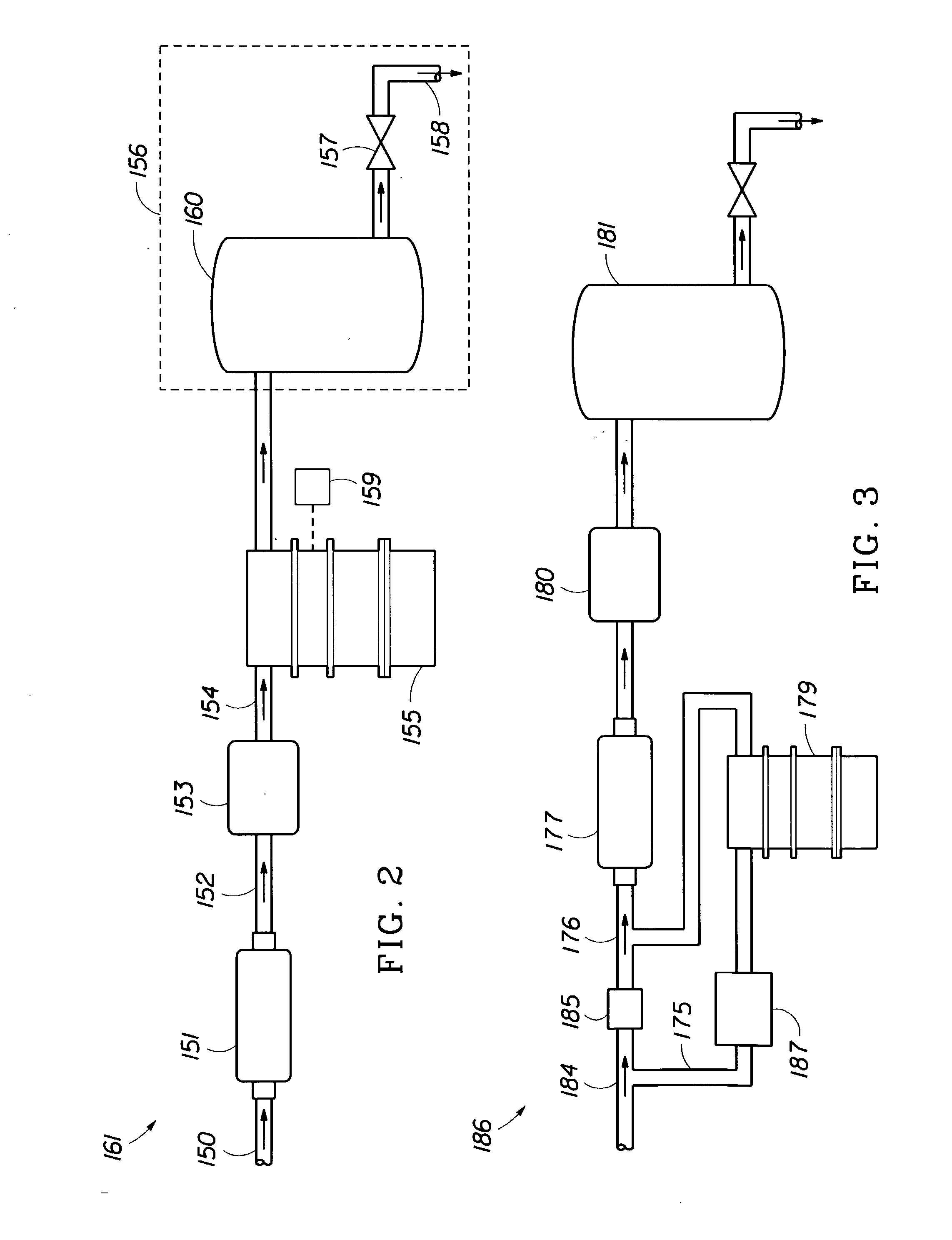Microorganism control of point of use potable water sources
a technology of microorganisms and potable water, applied in the direction of water/sewage treatment by oxidation, manufacturing tools, solid balls, etc., can solve the problems of poor energy efficiency of ozone production, high cost of ozone generating equipment, and deterred the use of ozone in many applications
- Summary
- Abstract
- Description
- Claims
- Application Information
AI Technical Summary
Benefits of technology
Problems solved by technology
Method used
Image
Examples
Embodiment Construction
[0079] An ozone generator was designed and fabricated in accordance with FIG. 9 to produce about 0.16 grams of ozone per 24 hours. A single electrolyzer cell with an active area of approximately 0.08 cm.sup.2 was used to generate and deliver ozone gas directly to a storage reservoir containing reverse osmosis quality water. The system was fabricated from polyvinyl difluoride (PVDF) and was approximately 2 inches in length. The system consisted of six individual pieces: a plastic housing, an 1 / 8" diameter porous titanium anode frit coated with lead dioxide, a 1 / 4" diameter Nation proton exchange membrane, a 1 / 4" porous stainless steel frit, and a 1 / 2" diameter expanded stainless steel flow field and a plug that is screwed into the bottom of the assembly to hold all the components in the housing. The proton exchange membrane is also used as a gasket to provide sealing between the cathode and anode.
[0080] The porous titanium and the porous stainless steel frits are fitted with leads th...
PUM
| Property | Measurement | Unit |
|---|---|---|
| temperature | aaaaa | aaaaa |
| current efficiency | aaaaa | aaaaa |
| temperatures | aaaaa | aaaaa |
Abstract
Description
Claims
Application Information
 Login to View More
Login to View More - R&D
- Intellectual Property
- Life Sciences
- Materials
- Tech Scout
- Unparalleled Data Quality
- Higher Quality Content
- 60% Fewer Hallucinations
Browse by: Latest US Patents, China's latest patents, Technical Efficacy Thesaurus, Application Domain, Technology Topic, Popular Technical Reports.
© 2025 PatSnap. All rights reserved.Legal|Privacy policy|Modern Slavery Act Transparency Statement|Sitemap|About US| Contact US: help@patsnap.com



